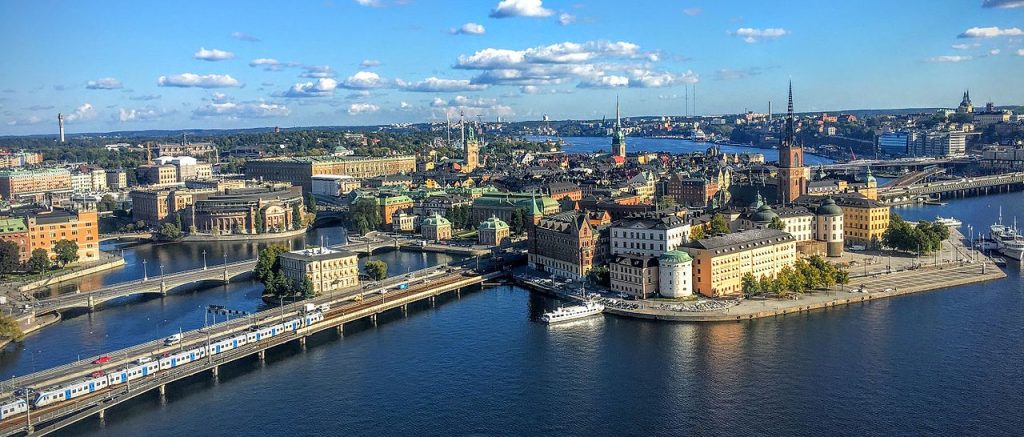Stockholm and some areas of southern Sweden are described extensively in the novel The Wallenberg Dossier. Stockholm is described as a bright, sunny city, with details of the Arvusterns Palace and the bright roads of central Stockholm.
Additionally the author describes the Swedish countryside outside Stockholm where Wallenberg loves driving his convertibles automobiles and the Island of Gotland which he loves observing when he thinks of Mira. The author describes Sweden as a positive, protective country, flooded by a bright, intense light.

View from Stockholm City Hall, Stockholm, Sweden.
Sweden maintained a policy of neutrality during World War II. The neutrality of Sweden is the result of its realpolitik approach, a military build-up to defend its borders, its particular geopolitical position at the northernmost borders of Europe, in the Scandinavian Peninsula. Sweden had a neutral stance in international relations since the end of the Napoleonic Wars in 1814 and the invasion of Norway and was able to maintain this status when the war began on 1 September 1939 and throughout the war.
The Swedish Government made a few concessions, and sometimes breached the nation’s neutrality in favor of both Germany and, later, the Western Allies.
During the German invasion of the Soviet Union in June–July 1941, Sweden allowed the Wehrmacht to use Swedish railways to carry the German 163rd Infantry Division and heavy weapons from Norway to Finland. Until 1943, German soldiers traveling on leave between Norway and Germany were allowed the permittenttrafik, the authorisation to pass through Sweden.
Sweden sold iron ore to Germany throughout the war while later, Sweden shared military intelligence with the Allies and helped to transport soldier refugees from Denmark and Norway, heading for the liberation of their home countries. Allies also used Swedish airbases between 1944 and 1945.
In September 1939, Germany attacked Poland and both France and Britain declared war on Germany, while Sweden declared itself a neutral country in regard to this escalating situation. On the outbreak of the Winter War between Finland and the Soviet Union in November 1939, Sweden declared itself to be “non-belligerent”, though actively siding with Finland with economical aids and armaments.
Sweden was not attacked during World War II. However Great Britain and Germany instated naval blockades while the accidentally bombed some cities like Strängnäs, which led to problems with the supply of food and fuels. When Germany invaded Denmark and Norway in April 1940, coupled with a German blockade of the North Sea, every shipment had to be negotiated with both British and German authorities, which reduced significantly trades. Between 1938 and 1944, the Swedish import of petroleum products and coal decreased by 88% and 53% respectively, which led to severe shortages. Also natural rubber, alloy metals and food imports were reduced. This situation led to extensive rationing of fuels and food in Sweden.
Swedish neutrality comes from a former policy of neutrality in armed conflicts, which was in effect from the early 19th century to 2009, when Sweden entered into various mutual defence treaties with the European Union (EU), and other Nordic countries, eventually leading to the request to enter NATO. Sweden’s previous neutrality policy had originated largely as a result of Sweden’s involvement in the Napoleonic Wars during which over a third of the country’s territory was lost in the Finnish War (1808–1809), including the loss of Finland to Russia. Finland then remained a part of Russia until it gained independence in 1917. Resentment towards the Swedish king Gustav IV Adolf who had consistently pursued an anti-napoleonic policy and thereby caused the war, precipitated a coup d’état known as the Coup of 1809. The new regime deposed the king and introduced the Instrument of Government (1809), later formulating a new foreign policy which became known as The Policy of 1812.
